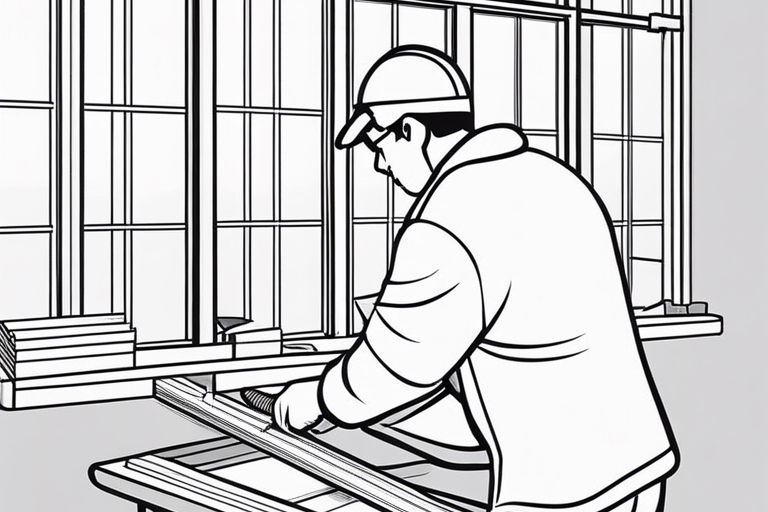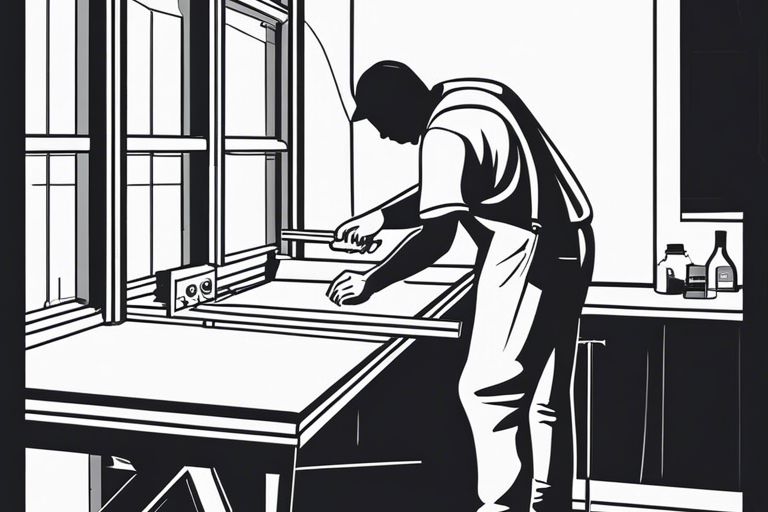Unveiling The Superior Filler For Window Frame Reconstruction

Many window frame reconstructions can be fraught with challenges, from finding the right materials to ensuring a lasting repair. Discover the superior filler that stands out amongst the rest for its durability, ease of application, and weather resistance. Say goodbye to frequent touch-ups and hello to a solution that will protect your home for years to come.
Key Takeaways:
- Polyurethane foam fillers are ideal: When reconstructing window frames, polyurethane foam fillers are a superior option due to their excellent expansion capabilities and moisture resistance.
- Benefits of polyurethane foam: Polyurethane foam fillers provide superior insulation, are easy to apply, and offer excellent adhesion to various surfaces, making them a versatile choice for window frame reconstruction.
- Consider long-term durability: When choosing a filler for window frame reconstruction, prioritizing durability is crucial to ensure the longevity and structural integrity of the repaired frames.

The Importance of Filler in Window Frame Reconstruction
Structural Integrity
While reconstructing window frames, it is crucial to prioritize structural integrity. An improper filler can compromise the stability of the window frame and potentially lead to structural issues in the future.
Energy Efficiency
Reconstruction of window frames also plays a significant role in enhancing energy efficiency. Using a high-quality filler can help prevent drafts and improve insulation, ultimately reducing energy consumption and lowering utility costs.
When reconstructing window frames for energy efficiency, it is important to choose a filler that is resistant to moisture to prevent mold growth and capable of expanding and contracting with temperature changes to maintain a tight seal.
Types of Fillers for Window Frame Reconstruction
The window frame reconstruction process involves choosing the right filler for the job. There are various types of fillers available, each with its own advantages and disadvantages. It is crucial to understand the differences between traditional and modern fillers to make an informed decision. Here is a breakdown of the types of fillers commonly used in window frame reconstruction:
| Type | Description |
| Traditional Fillers | Include materials like wood putty and epoxy fillers. These fillers are commonly used for repairing historic window frames. |
| Modern Fillers | Utilize new materials and technologies such as synthetic resins and composite fillers. These fillers offer enhanced durability and weather resistance. |
| Eco-Friendly Fillers | Environmentally friendly options made from recycled materials, ideal for sustainable window frame reconstruction projects. |
| Flexible Fillers | Designed to accommodate movement in the window frame without cracking or breaking, ensuring long-term stability. |
| High-performance Fillers | Specialized fillers with superior strength and adhesive properties, suitable for high-impact areas or extreme weather conditions. |
Traditional Fillers: Advantages and Disadvantages
For window frame reconstruction, traditional fillers like wood putty offer ease of use and are readily available. However, these fillers may require frequent maintenance and can be prone to shrinking or cracking over time.
Modern Fillers: New Materials and Technologies
Types of modern fillers for window frame reconstruction include strong synthetic resins and composite materials. Understanding the benefits of these fillers, such as enhanced durability and weather resistance, is crucial for long-lasting window frame repairs.
Perceiving the advancements in filler materials and technologies for window frame reconstruction is crucial for ensuring the longevity and structural integrity of historic and modern windows. For further information on the maintenance and repair of historic aluminum windows, refer to Maintenance and Repair of Historic Aluminum Windows.
The Superior Filler: Characteristics and Benefits
Once again, if you are looking to reconstruct your window frames with a top-notch filler, consider using the DIY Stripping Steam Box for Antique Window Glazing Removal and Restoration. This filler offers exceptional characteristics and benefits that make it a superior choice for your project.
Durability and Longevity
One key advantage of this superior filler is its unmatched durability and longevity. It is designed to withstand various weather conditions and provide long-lasting support for your window frames, ensuring they remain intact for years to come.
Ease of Installation and Maintenance
Ease of Installation and Maintenance is crucial when considering a filler for window frame reconstruction. With this superior filler, you can expect effortless installation and minimal maintenance requirements. For instance, it can be easily applied and shaped to fit the specific needs of your window frames, saving you time and effort in the long run.
Conclusion
Considering all points discussed, it is evident that choosing the superior filler for window frame reconstruction is crucial for ensuring durable and long-lasting results. By selecting a high-quality filler that offers excellent adhesion, flexibility, and weather resistance, you can enhance the structural integrity and aesthetic appeal of your window frames. Prioritize the use of a filler that is specifically designed for window applications to achieve the best possible outcomes for your project.
FAQ
Q: What is the best filler for window frame reconstruction?
A: The superior filler for window frame reconstruction is a two-part epoxy wood filler. This filler is durable, easy to work with, and provides long-lasting results.
Q: How does a two-part epoxy wood filler work?
A: A two-part epoxy wood filler consists of a resin and a hardener that, when mixed together, create a strong and durable substance. This filler bonds well to wood and can be shaped and sanded once it has cured.
Q: Why is a two-part epoxy wood filler recommended for window frame reconstruction?
A: A two-part epoxy wood filler is recommended for window frame reconstruction because it is water-resistant, weatherproof, and can withstand the elements. It also provides excellent adhesion and structural integrity, making it ideal for repairing and rebuilding window frames.
Q: How do I use a two-part epoxy wood filler for window frame reconstruction?
A: To use a two-part epoxy wood filler, mix the resin and hardener according to the manufacturer’s instructions. Apply the filler to the damaged areas of the window frame, shaping it as needed. Once the filler has cured, sand it down to smooth out any rough edges.
Q: Are there any tips for achieving the best results with a two-part epoxy wood filler?
A: To achieve the best results with a two-part epoxy wood filler, make sure to thoroughly clean and prepare the surface before applying the filler. Work quickly as the filler can harden fast, and follow the instructions carefully for mixing and application. Additionally, sanding the filler once it has cured will help ensure a seamless finish.